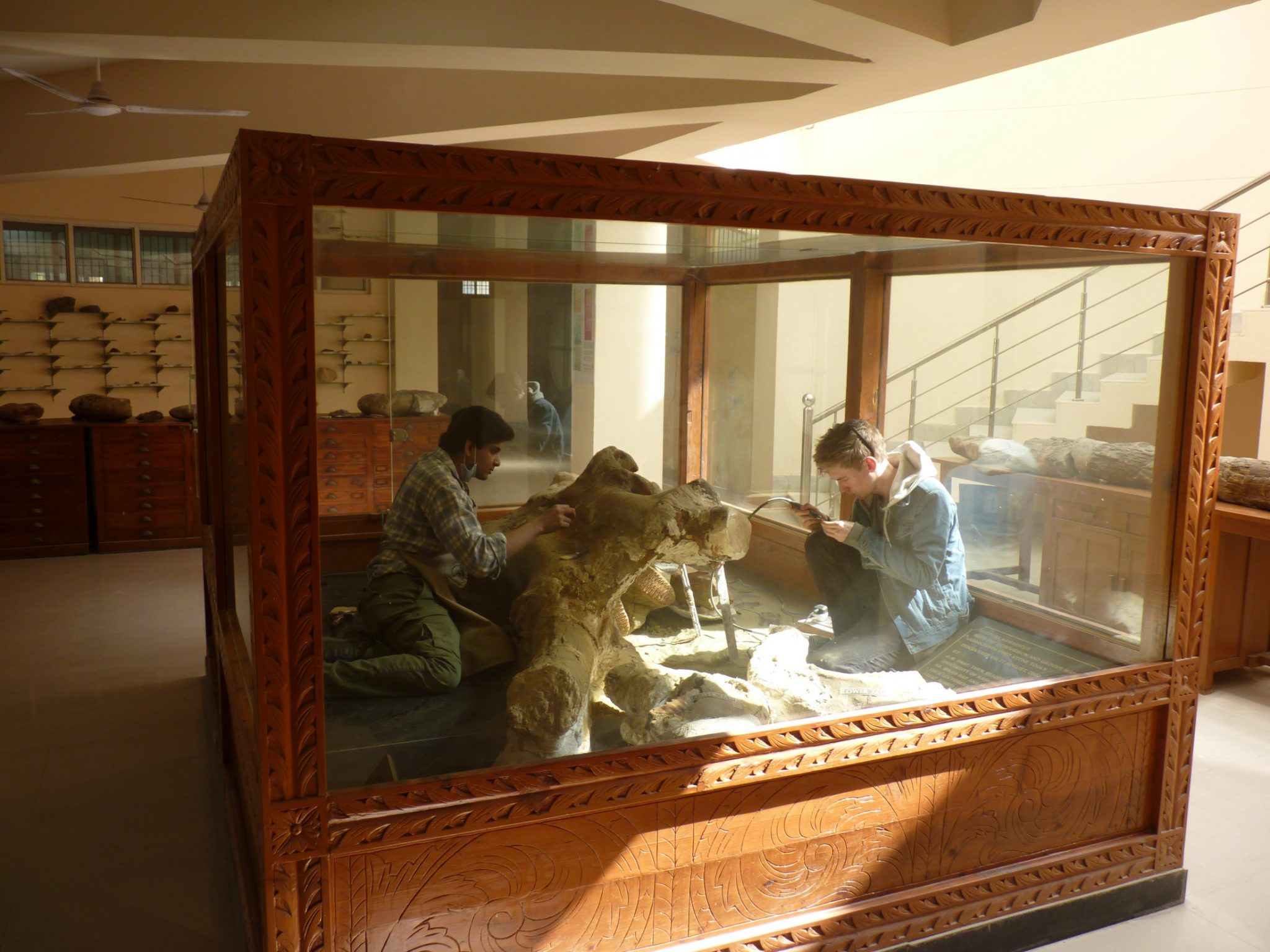Unearthed in Kashmir: Ancient Elephants and Early Humans' Oldest Butchery Site in India

Around 300,000 to 400,000 years ago, during the late Middle Pleistocene, the lives of at least three massive elephant ancestors came to an end near a river in Kashmir Valley, South Asia. After their deaths, layers of sediment gradually enveloped their remains, preserving not only their bones but also 87 stone tools crafted by the ancestors of modern humans. Now, these discoveries offer fascinating glimpses into early human activity in India and shed light on an extinct species of elephants.
The fossils were first uncovered in 2000 near Pampore, a town nestled in the Kashmir Valley. However, the identity of these ancient bones and the circumstances surrounding the elephants' deaths remained shrouded in mystery until recently. With two new studies published, scientists are beginning to piece together the history of these prehistoric giants and the early humans who likely fed on their remains.
Advait Jukar, a curator of vertebrate paleontology at the Florida Museum of Natural History, and his team have revealed intriguing evidence suggesting that early humans broke apart the elephant bones to extract nutrient-rich marrow. The discovery represents the earliest known instance of animal butchery in India, predating previous evidence by hundreds of thousands of years.
Discovering an Ancient Feast
The fossils are rare finds, belonging to an extinct genus of elephants called Palaeoloxodon, a group whose members dwarfed today’s African elephants. Standing up to twice as heavy, these ancient elephants were true giants of their time. The bones from the Pampore site represent the most complete remains of this species ever found in the region. Previously, only one set of bones from this species, Palaeoloxodon turkmenicus, had been documented, with the first partial skull fragment discovered in Turkmenistan in 1955.
For years, paleontologists were left with just stone tools to sketch a vague picture of our early ancestors in the Indian subcontinent. The only known fossil hominin from the region, the Narmada human, was found in 1982 and displayed a blend of characteristics from both older and more recent species, suggesting that India played a significant role in human evolution and migration. Now, thanks to the Pampore findings, it is evident that early humans were not just toolmakers—they were also adept at utilizing the resources around them, even if it meant scavenging from elephants.
"So, the question is, who are these hominins?" Jukar pondered. "What are they doing on the landscape, and are they going after big game or not? Now we know for sure that, at least in the Kashmir Valley, these hominins were indeed eating elephants."
The Tools That Told the Story
The tools found at the site, made from basalt, hint at the ingenuity of these early humans. Basalt does not occur naturally in the area, meaning that the raw material had to be transported from elsewhere before being shaped into tools near the riverbank. Analysis of the tools and bones suggests that these artifacts date back between 300,000 and 400,000 years, significantly pushing back the timeline of human activity in India.
The discovery challenges previous assumptions about early human behavior in the region. Up until now, there had been no direct evidence to suggest that early humans in India targeted large animals for meat. The previous oldest signs of butchery in India were less than 10,000 years old. "It might just be that people haven't looked closely enough or have been searching in the wrong places," Jukar remarked. "But until now, no one had found direct evidence of humans feeding on large animals in India."
A Closer Look at the Elephants
Most of the remains belonged to a mature male Palaeoloxodon whose bones held further clues. Inside its massive skull, signs of abnormal bone growth indicated a long-term sinus infection. Although the remains showed evidence of human activity, such as marrow extraction, it is not clear whether the hominins hunted the elephant or found it after its natural death. Given the debilitating sinus infection, it is plausible the elephant could have become stuck in the soft riverbank sediments near the Jhelum River, sealing its fate and providing a feast for the opportunistic humans who stumbled upon it.
The condition of the skull proved invaluable for classification purposes. Unlike other members of its genus, which are known for their unique, bulging foreheads, P. turkmenicus showed an intermediate evolutionary stage, with a pronounced but not crested forehead. This observation may help paleontologists better understand how the Palaeoloxodon genus spread and evolved from its origins in Africa about a million years ago.
Fortunately, the fossil also retained intact hyoid bones—tiny, fragile bones in the throat that aid in vocalization. Because hyoids vary significantly between species, they offered a unique tool for identifying this particular Palaeoloxodon specimen with greater certainty.
Filling in the Gaps of Early Human Life in India
The Pampore discovery extends the timeline of human-megafauna interactions in India, providing fresh insights into our ancestors' diets and survival strategies. Despite humans' long history of meat consumption, evidence of early butchery has often gone overlooked. Jukar suggests that in the early days of paleontology, researchers tended to collect only complete or aesthetically impressive fossils, often ignoring fragmented bones. Yet these shattered pieces could hold key clues to understanding early human behavior.
"We need to put in a lot more effort to find these sites, survey thoroughly, and collect everything," Jukar explained. "Fragments can tell us more about human activity than a perfect skull sometimes can."
The study documenting the butchery at Pampore has been published in Quaternary Science Reviews, while a separate paper detailing the taxonomy of the fossils has appeared in the Journal of Vertebrate Paleontology. Together, these works are reshaping our understanding of early life on the Indian subcontinent, revealing a landscape where humans and elephants once crossed paths in the most ancient of feasts.
Story Source:
Materials provided by Florida Museum of Natural History. The original text of this story is licensed under a Creative Commons License. Note: Content may be edited for style and length.
Journal Reference:
- Ghulam M. Bhat, Nick Ashton, Simon Parfitt, Advait Jukar, Marc R. Dickinson, Bindra Thusu, Jonathan Craig. Human exploitation of a straight-tusked elephant (Palaeoloxodon) in Middle Pleistocene deposits at Pampore, Kashmir, India. Quaternary Science Reviews, 2024; 342: 108894 DOI: 10.1016/j.quascirev.2024.108894
- Advait M. Jukar, Ghulam Bhat, Simon Parfitt, Nick Ashton, Marc Dickinson, Hanwen Zhang, A. M. Dar, M. S. Lone, Bindra Thusu, Jonathan Craig. A remarkable Palaeoloxodon (Mammalia, Proboscidea) skull from the intermontane Kashmir Valley, India. Journal of Vertebrate Paleontology, 2024; DOI: 10.1080/02724634.2024.2396821

0 Comments